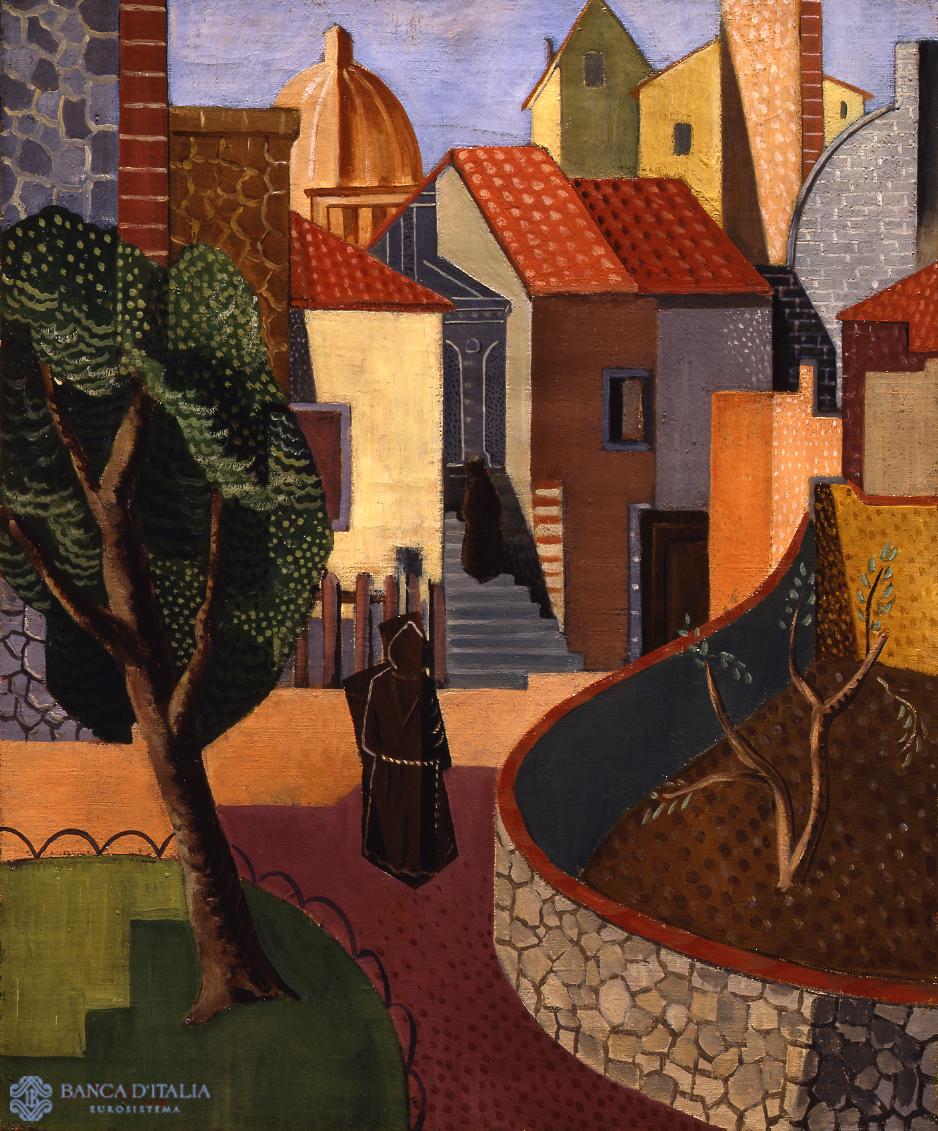Renato Paresce (Carouage 1868 – Paris 1937) graduated in physics and worked in that field in Paris and London in 1912. He had always drawn, from a very early age, although none of these early efforts survive, and from that went on to become a self-taught painter as well as a journalist.
In Paris he joined with the artists who came to be known as “montparnos” for their predilection for the Montparnasse quarter – Modigliani above all, but also Picasso. At first he was inclined to the work of Cézanne, with some influence of Derain. Between 1920 and 1925 Paresce was in London as the correspondent of the Turin newspaper La Stampa. There he turned to the Primitives, but on his return to Paris he renewed his interest in the Cubist experience.
In the late 1920s his relationship with the Primitives, hence with the “return to order,” became charged with metaphysical tones, although after 1931 he was also drawn to the Cubism of Léger and the contemporary work of Prampolini. In other words, “magical realism,” of which Paresce was one of the leading figures, links in with the figurative re-articulation of Metaphysical painting, as in the work of a good many European and American artists.
Renato Paresce, like others (see, in this same site, Riccardo Francalancia), was a self-taught artist. Through his intense, first-hand experience of the artistic environment of the day, and thanks to his great intellectual capacities, he developed a personal vision and devised expressive instruments perfectly suited to it. He exhibited in the most important shows of the time, such as the Venice Bienniale and the Quadriennials in Rome, as well as a series of one-man shows in Paris, London, Berlin and Zurich.
Renato Paresce
Renato Paresce (Carouge 1868 - Paris 1937)
20th century AD



